
Former African students work as traders on the 7th Km Market.
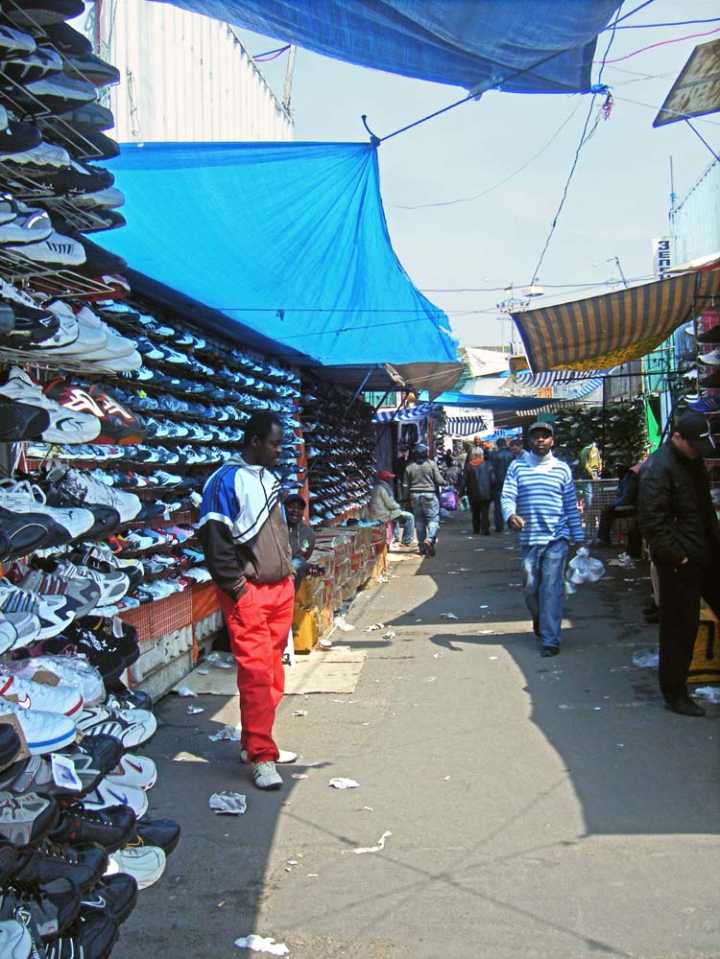
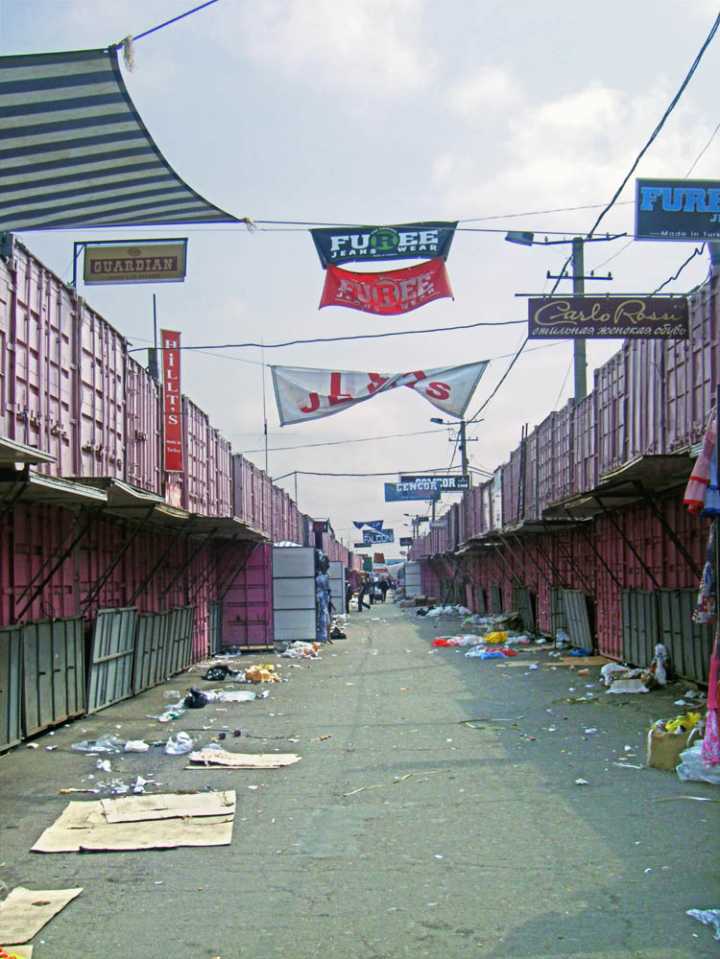
Right: The 7th km: Pink street after closing time.
The 7th km: night-time wholesale trade.
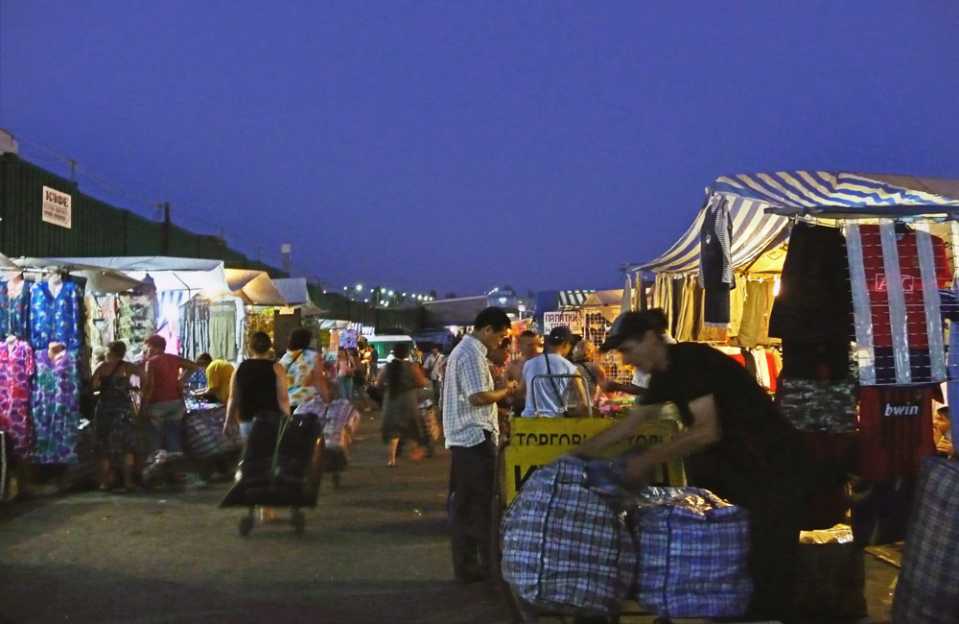
A Turkish trader selling Turkish leather goods.
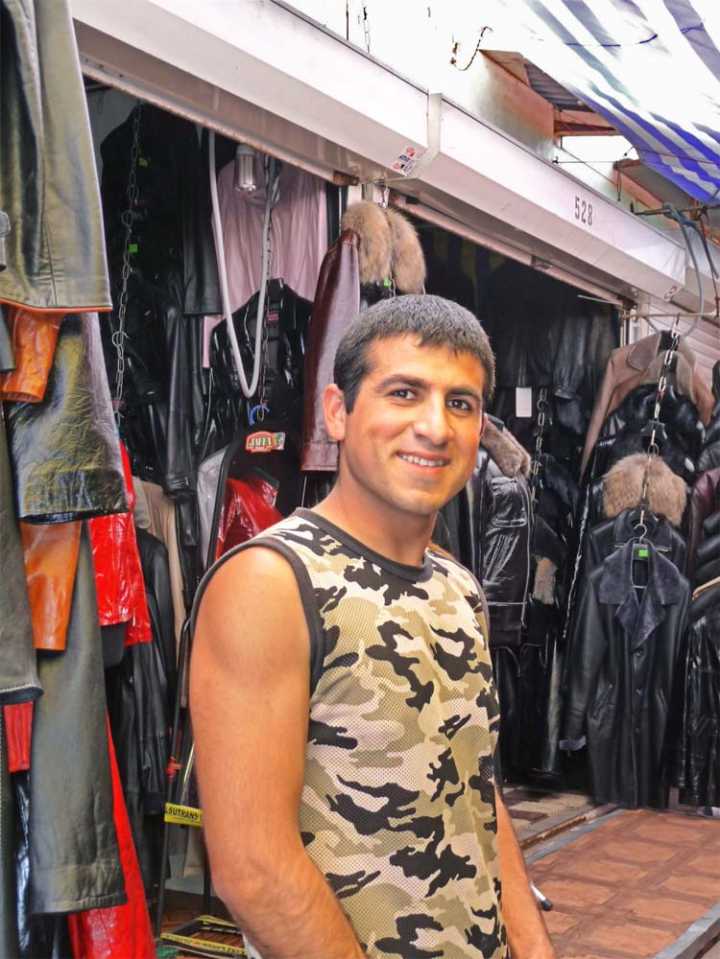
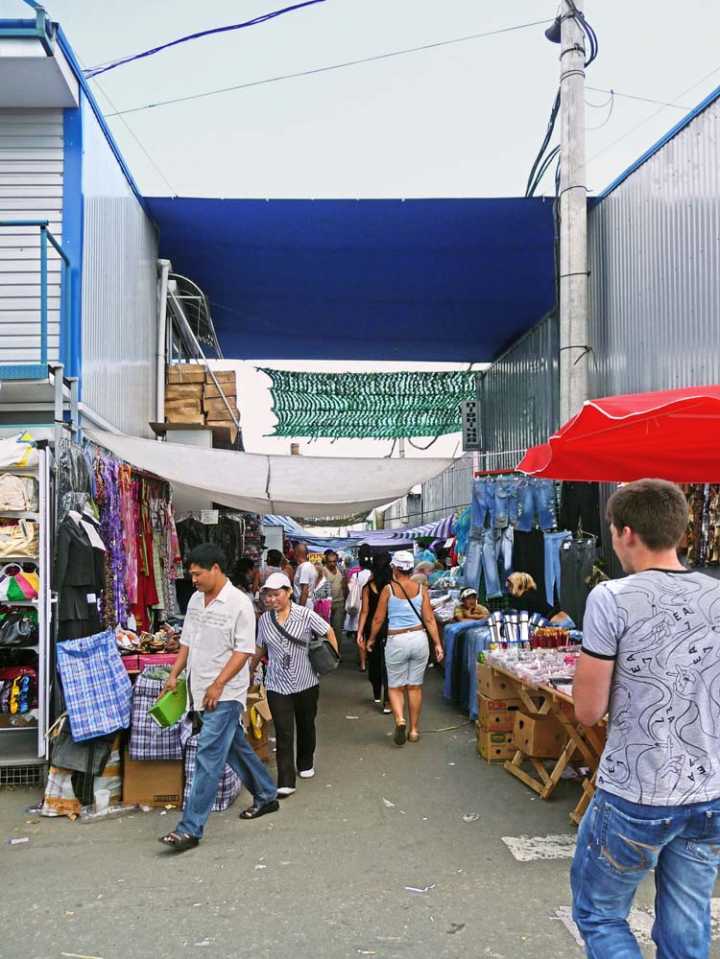
Right: A Vietnamese money changers' corner.
Sociality on the market: a shared meal after work.
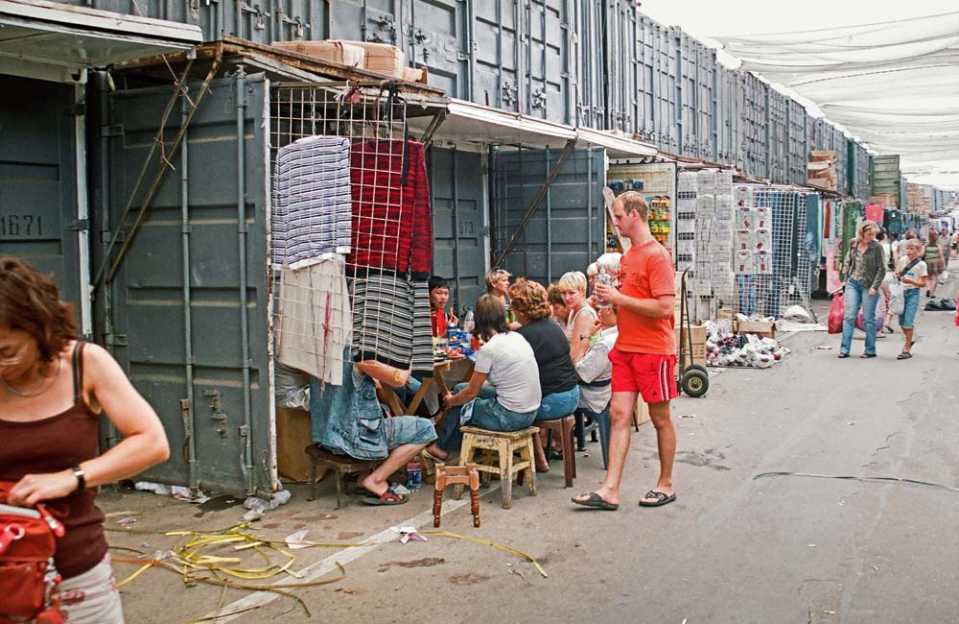
The mystery and lack of transparency is of the essence of this kind of market space. For many people realize, and the traders certainly know, that its glorious profitability depends on the market not being regularized, transparent, fully taxed, or nationalized. As of 2007, even the president seemed to have abandoned the idea of subjecting Sedmoi to his power; he could only live off it. And as for Odessa city with its attempt to drain off a reliable stream of funds, people talked only of the looming combat. With the economic crisis of 2008-9, the wonderful profitability of Sedmoi began to melt away. With containers locked, empty, or removed altogether, many traders were having to find alternative ways of earning a living.
The idea of the ‘heterotopia’ encapsulates well the multiplicity of ways that such a transnational market challenges, yet links into, the (relatively) legal mainstream economy, culture and society. It has its own spatial lay-out and architecture – a lateral, cell-like, modular, spreading, aesthetic that contrasts with the vertical ambitions of the city centre. The market’s internal policing provides physical security and the possibility of home-like sociality for the various strands of multi-national trade networks; and this again contrasts with the xenophobia that seems to have arisen in Odessa recently. Unlike the grey and anonymous ‘non-places’ that proliferate at Western sites of connectivity (all those airport concourses, supermarket aisles, long-distance bus stations, trading floors or internet cafés, Augé 1996), the container market has become a place of intense social interaction.
Vera Skvirskaja
Department of Anthropology
University of Copenhagen, Denmark
Caroline Humphrey
King’s College
University of Cambridge, UK
BIBLIOGRAPHY
Augé, Marc 1995 Non-Places: Introduction to an Anthropology of Supermodernity.
Translated by John Howe. London: Verso.
Foucault, Michel 1986 ‘Of other spaces,’ Diacritics, Spring 1986, 22-27.
Myers, Stephen 2006 ‘From Soviet-era flea market to a giant makeshift mall,’ New York Times, May 19.
Polese, Abel 2007 n.d. ‘Border crossing as a strategy of daily survival: the Odessa-Chisinau elektrichka’ (unpublished MSS).
Prigarin, Aleksandr 2007 n.d. ‘Rynok “7 kilometr”: torgovaya subkul’tura v sovremennoi Odesse’ (unpublished MSS).
(1) These are Ukrainian, Central Asian and Georgian foods. See ‘Petro’s Jotter, Observations of Post-or Ukraine’, at the Seventh Kilometer website.
(2) This may seem strange in a Ukrainian city. Odessa, however, has always been a Russian-speaking town. Possibly, the term ‘Ne Russkii’ is a local Odessan expression.
(3) Official site of Promrynok 7-oi Kilometr, news, 01.10.2007.
read more...
read more...
read more...
read more...
read more...
read more...
read more...
read more...
read more...
read more...
read more...
read more...
read more...
read more...